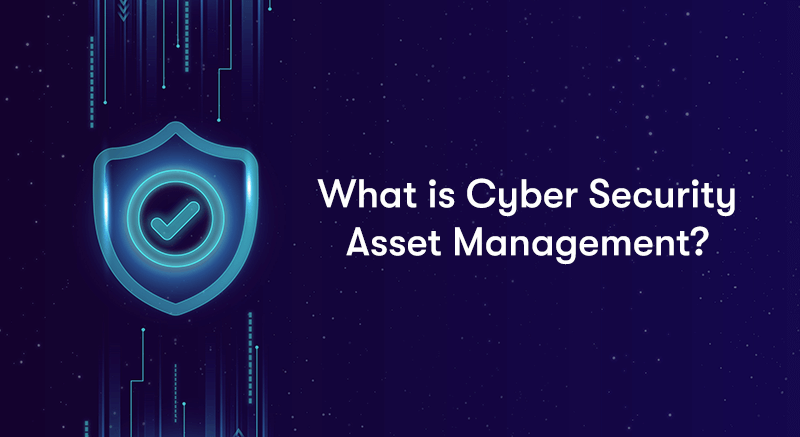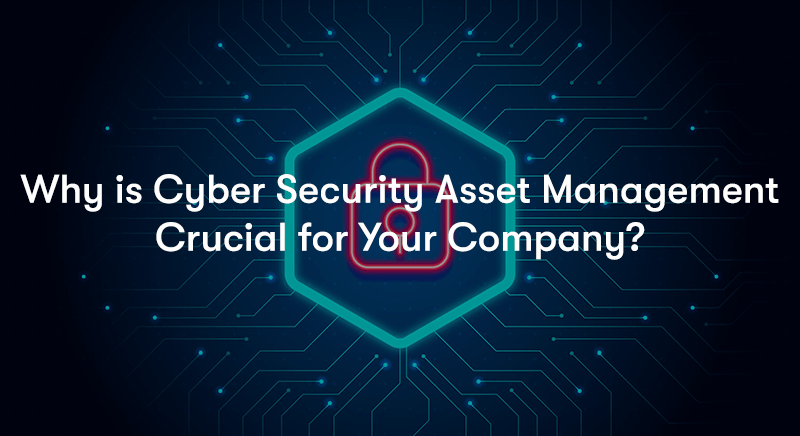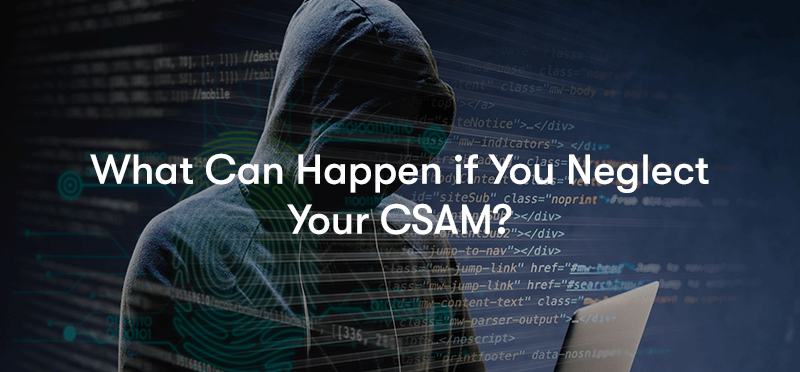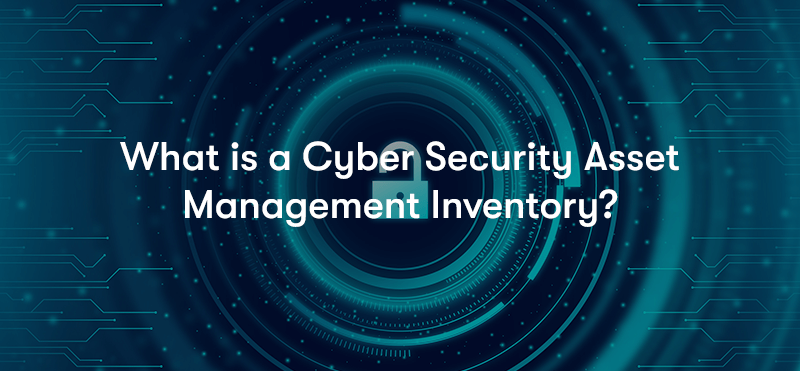What Is CSAM? (Cyber Security Asset Management)
Welcome to our in-depth exploration of Cybersecurity Asset Management (CSAM), a vital cornerstone in safeguarding today's digital landscape. In an era where cyber threats are evolving and becoming increasingly sophisticated, understanding CSAM becomes paramount for any organisation. At its core, CSAM is the strategic framework encompassing the identification, categorisation, and continuous monitoring of all IT and OT (Operational Technology) assets within an organisation. These assets range from hardware and software to sensitive data and network systems, each requiring meticulous management to ensure robust security.
This blog post delves into the essential components of CSAM, shedding light on its significance, best practices, and its integral role in fortifying an organisation's cybersecurity posture. Join us as we navigate the nuances of CSAM, unravelling its importance in the modern digital world.
What is Cyber Security Asset Management?

Cybersecurity Asset Management refers to continuously identifying, classifying, monitoring, and managing the security of assets within an organisation's IT environment. These assets can include hardware (like servers, computers, and networking equipment), software applications, and data. The key elements of this management process typically involve:
Identification of Assets
This step involves discovering all the assets within an organisation's network. It's crucial to have a comprehensive inventory, as unknown or unmanaged assets can be a security risk.
Classification and Categorisation
Once identified, assets must be classified based on their type, criticality, and the data they handle. This helps in prioritising security measures.
Risk Assessment
Assessing the risks associated with each asset. This includes understanding the vulnerabilities of each asset, the potential threats they face, and the impact of a security breach.
Security Controls Implementation
Based on the risk assessment, appropriate security controls and measures are applied to each asset to mitigate identified risks. This can include firewalls, antivirus software, encryption, and access controls.
Continuous Monitoring and Updating
The IT environment is dynamic, so continuous monitoring is crucial. This involves regularly scanning for vulnerabilities, patch management, and keeping the asset inventory current.
Compliance Management
Ensuring that the management of assets complies with relevant laws, policies, and regulations.
Incident Response and Recovery
In the case of a security incident, having plans in place for response and recovery is part of asset management. This ensures that any breach's impact is minimised and recovery is as swift as possible.
Overall, cybersecurity asset management is a strategic approach to protecting an organisation's digital assets from cyber threats and ensuring the resilience of its IT infrastructure. It's a critical component of an organisation's overall cybersecurity strategy.
Why is Cyber Security Asset Management Crucial for Your Company?

Cybersecurity Asset Management is crucial for any company for several key reasons:
Visibility and Control Over Assets
In today's complex IT environments, knowing what assets you have, where they are, and how they are used is fundamental. This knowledge is necessary to secure your network effectively. Asset management provides visibility and control over these assets.
Risk Management
Risk Management helps identify and manage risks associated with each asset. By understanding which assets are critical and vulnerable, companies can prioritise their security efforts and resources more effectively, reducing the likelihood of a breach.
Regulatory Compliance
Many industries have strict regulations regarding data protection and privacy (like GDPR, HIPAA, etc.). Asset management ensures that your company complies with these regulations by tracking where sensitive data is stored and how it's protected.
Efficient Resource Allocation
By understanding the security needs of each asset, companies can allocate their cybersecurity resources more efficiently, avoiding both under-protection of critical assets and over-spending on less critical ones.
Proactive Threat Detection and Mitigation
Continuous monitoring of assets helps in detecting potential threats early. This proactive approach is far more effective than reacting to a breach after it has occurred.
Minimising Attack Surface
Proper asset management includes ensuring that all software is up-to-date and patched, which minimises the attack surface that hackers can exploit.
Enhanced Incident Response
In the event of a security incident, having a well-managed inventory of assets allows companies to respond more quickly and effectively, thereby minimising the impact of the breach.
Support for Remote and Hybrid Work Environments
With the increase in remote and hybrid work models, asset management becomes even more critical as it extends to devices and networks outside the traditional office environment.
Cost Savings
Effective asset management can lead to significant cost savings by identifying unused or underused assets that can be decommissioned or repurposed and avoiding the high costs associated with a data breach.
Business Continuity and Reputation
It is vital in maintaining business continuity and protecting the company's reputation. A breach can lead to significant downtime and damage to a company's reputation, which can have long-term financial consequences.
In summary, Cybersecurity Asset Management is not just a technical necessity but a strategic business imperative. It provides a foundation for a secure IT environment, which in turn supports the overall health and success of the company.
What Can Happen if You Neglect Your CSAM?

Neglecting Cybersecurity Asset Management can lead to several significant risks and consequences for a company, including:
Increased Risk of Cyber Attacks
With proper asset management, you may be aware of all the assets in your network, leading to unmanaged and unprotected devices or software. These can become easy targets for cybercriminals.
Data Breaches and Loss
Unmanaged assets are more vulnerable to breaches. This can lead to the loss or theft of sensitive data, including customer information, intellectual property, and trade secrets.
Non-Compliance and Legal Penalties
Failing to manage your digital assets can lead to non-compliance with regulations like GDPR, HIPAA, or CCPA. Non-compliance can result in hefty fines and legal action.
Reputation Damage
A cyberattack or data breach due to poor asset management can damage your company's reputation. Loss of customer trust can have long-term impacts on your business.
Operational Disruptions
A cyberattack can disrupt business operations, leading to downtime, loss of productivity, and potentially significant financial losses.
Inefficient Use of Resources
Companies may waste resources on unnecessary or redundant assets without a clear understanding of the assets in use. This inefficiency can also lead to gaps in security coverage.
Difficulty in Incident Response
In the event of a security incident, the lack of a well-managed asset inventory can hinder effective and timely response, exacerbating the impact of the incident.
Vulnerability to Insider Threats
Neglecting CSAM can increase vulnerability to insider threats. Malicious insiders can misuse unmanaged assets or become unintentional threats due to employee negligence.
Challenges in Scaling Security Measures
As your business grows, scaling security measures becomes more manageable if you properly understand your existing assets.
Compromised Data Integrity and Availability
Inadequate asset management can lead to compromised data integrity and availability, affecting decision-making and business processes.
In essence, neglecting Cybersecurity Asset Management can expose your organisation to a wide range of security risks and operational challenges, potentially resulting in significant financial, legal, and reputational damage. It's an essential part of a robust cybersecurity strategy and fundamental to the overall health and resilience of a company's IT infrastructure.
What is an Asset in Cyber Security Asset Management?
In Cybersecurity Asset Management, an asset refers to any resource, component, or element within an organisation's IT environment that needs to be managed and protected from cybersecurity threats. These assets are typically categorised into various types:
Hardware Assets
This includes all physical devices such as servers, computers, laptops, mobile devices, routers, switches, and other network equipment. Hardware assets also encompass peripheral devices like printers, scanners, and IoT (Internet of Things) devices.
Software Assets
Software assets consist of all the applications and operating systems the organisation uses. This category includes installed software on individual devices, cloud-based applications, and software suites.
Data Assets
Data assets are the most critical and include all types of data stored, processed, or transmitted by the organisation. This can range from confidential business information, intellectual property, and customer data to employee records and financial information.
Network Assets
These components comprise the organisation's network infrastructure, including firewalls, routers, switches, Wi-Fi access points, and the network architecture itself.
Cloud Assets
With the increasing reliance on cloud computing, assets stored or processed in the cloud are also critical. This includes data stored in cloud services, virtual machines, cloud-based applications, and infrastructure as a service (IaaS) components.
Virtual Assets
This category includes virtual servers, machines, containers, and other virtualised environments in the IT infrastructure.
Configuration and Identity Assets
These include user accounts, credentials, configuration files, and other identity-related elements crucial for access control and security settings within the IT environment.
Understanding and managing these diverse types of assets is essential in CSAM. Each type of asset has its own set of vulnerabilities and requires specific security controls. Accurate and up-to-date knowledge of these assets allows an organisation to secure its IT environment effectively against cyber threats, comply with regulatory requirements, and ensure the smooth operation of its business processes.
What Are Some Best Practices for Cyber Security Asset Management?

Implementing best practices in Cybersecurity Asset Management is essential for maintaining a robust and secure IT environment. Here are some key best practices to consider:
Comprehensive Asset Inventory
Maintain an up-to-date inventory of all assets, including hardware, software, data, and network resources. This inventory should be dynamic, automatically updating as assets change or new ones are added.
Asset Classification and Prioritisation
Classify assets based on their criticality to business operations and their sensitivity, particularly regarding data. Prioritise assets so that those most critical or vulnerable receive the highest level of security.
Regular Vulnerability Assessments and Patch Management
Continuously monitor and assess the vulnerabilities of all assets. Implement a robust patch management process to ensure all software and systems are updated with the latest security patches.
Centralised Asset Management Tool
Utilise a centralised asset management tool or platform to track and manage assets throughout their lifecycle. This tool should integrate with other security systems for a cohesive approach.
Implement Access Controls
Ensure that access to assets is controlled and monitored. Implement the principle of least privilege, ensuring users have only the access necessary for their role.
Network Segmentation
Segment your network to reduce the risk of lateral movement by attackers. This helps in isolating critical assets from less secure parts of the network.
Regular Security Audits and Compliance Checks
Conduct regular security audits to assess the effectiveness of your asset management practices. Ensure compliance with relevant industry regulations and standards.
Incident Response Planning
Include asset-related considerations in your incident response plan. Knowing the location and nature of your assets can significantly speed up response times and minimise impact during a security incident.
Training and Awareness
Educate employees about the importance of asset management and their role in maintaining asset security. This includes training on recognising and reporting potential security threats.
Disposal and Decommissioning
Establish secure procedures for the disposal or decommissioning of assets. Ensure that all data is securely erased and that disposed assets are not a security liability.
Cloud and Third-Party Asset Management
If using cloud services or third-party providers, ensure that assets hosted or managed by these entities are also included in your CSAM practices.
Continuous Improvement
Cybersecurity is an evolving field. Continuously improve and review your asset management practices, adapting to new threats and technological changes.
By implementing these best practices, organisations can significantly enhance their cybersecurity posture, minimise the risk of cyberattacks, and ensure the security and integrity of their IT assets.
What Are OT Assets?
OT, or Operational Technology, refers to the hardware and software systems that control and monitor physical processes, devices, and infrastructure. These assets are typically used in industrial and critical infrastructure environments. OT systems differ from traditional IT systems in that they directly impact the physical world. Key characteristics of OT assets include:
Control Systems
This includes systems like Supervisory Control and Data Acquisition (SCADA) systems, Distributed Control Systems (DCS), and Programmable Logic Controllers (PLC). These systems are used to control industrial processes, machinery, and infrastructure.
Industrial Equipment
This encompasses the physical machinery and devices controlled by OT systems, such as pumps, valves, turbines, robotic arms, and assembly lines.
Sensors and Actuators
These devices measure physical parameters (like temperature, pressure, and flow rate) and perform actions based on control signals, respectively. They are integral in providing feedback and control in industrial processes.
Industrial Networks
OT assets include the specialised network infrastructure connected and communicated between control systems, sensors, actuators, and industrial equipment. These networks often use protocols specific to industrial environments.
Human-Machine Interfaces (HMIs)
These interfaces allow human operators to interact with, monitor, and control industrial processes. They provide crucial visualisation and control capabilities.
Safety Systems
In many industrial settings, OT includes safety systems that prevent accidents, such as emergency shutdown systems, fire control systems, and alarms.
Embedded Systems
Many OT assets are embedded systems designed for specific control functions within a more extensive system or machine.
Building Management Systems (BMS)
In some contexts, systems used for managing building utilities and infrastructure, like HVAC systems, lighting, and access control, are considered OT assets.
OT assets are crucial in industries such as manufacturing, energy production and distribution, water treatment, transportation, and many others. Managing and securing these assets is vital due to their direct impact on critical infrastructure and essential services. Unlike IT assets, which primarily deal with information, compromising OT assets can lead to physical consequences, such as production stoppages, environmental damage, or even threats to human safety. As such, cybersecurity for OT assets often focuses on ensuring these systems' availability, safety, and reliability, alongside the confidentiality and integrity of the data they process.
What is a Cyber Security Asset Management Inventory?

A Cybersecurity Asset Management Inventory is a comprehensive and detailed listing of all the IT and OT assets within an organisation that are relevant to cybersecurity. This inventory is a critical component of an effective cybersecurity strategy, as it provides the foundational knowledge necessary for securing the organisation's digital environment. The key elements of a cybersecurity asset management inventory typically include:
Identification of Assets
This involves cataloguing every piece of hardware, software, and data within the organisation's network. It covers everything from servers, workstations, and network devices to applications, databases, and any other digital resources.
Asset Details
For each asset, detailed information is recorded, such as the asset type (e.g., hardware, software), model, manufacturer, serial number, location, owner, and the specific role or function it performs within the organisation.
Configuration and Version Information
This includes details about the operating system, installed software, firmware versions for hardware devices, and configuration settings. This information is vital for vulnerability assessment and patch management.
Classification and Categorisation
Assets are categorised based on their importance to the organisation, the sensitivity of the data they handle, and their criticality to business operations. This helps in prioritising security efforts.
Connectivity and Dependency Mapping
The inventory should document how assets are connected within the network and their dependencies on other assets. This is crucial for understanding the potential impact of a security incident on one asset upon others.
Security Posture
This includes information on the security measures applied to each asset, such as encryption, access controls, and any installed security software.
Compliance Information
If there are specific regulatory compliance requirements relevant to certain assets (like HIPAA for healthcare data or PCI-DSS for payment processing systems), this should be noted in the inventory.
Risk Level
Assigning a risk level to each asset based on its vulnerabilities, the potential impact of a compromise, and the likelihood of a threat.
A cybersecurity asset management inventory is not a static document; it requires regular updates to remain effective. As new assets are added, old ones are decommissioned, or existing ones undergo changes, the inventory should be updated accordingly. This dynamic nature of the inventory ensures that the organisation's cybersecurity strategies and defences can adapt to the ever-changing IT landscape and threat environment.
Having a well-maintained and accurate cybersecurity asset management inventory allows organisations to make informed decisions about where to allocate resources for maximum cybersecurity impact, plan effective defences, and respond quickly and effectively to any security incidents that may occur.
Where Can You Get CSAM Training and Certification?
Our Software Asset Management (SAM) Specialist training course will cover best practices in Software Asset Management and the practicality to understand and accordingly increase the maturity of SWAM by a Tier-based implementation.
In this course, we will cover security asset management in accordance to ISO/IEC 19770-2.

How is CSAM Related to ITAM?

Cybersecurity Asset Management and IT Asset Management are closely related disciplines within the broader scope of organisational asset management, but they focus on different aspects and objectives:
IT Asset Management
ITAM is primarily concerned with effectively managing, controlling, and protecting an organisation's IT assets. This includes hardware, software, and associated infrastructure. ITAM focuses on maximising the value and efficiency of IT assets throughout their lifecycle. It involves inventory management, compliance, licensing, financial considerations, and lifecycle management. ITAM aims to ensure that IT assets are utilised efficiently, cost-effectively, and aligned with business objectives.
Cybersecurity Asset Management
CSAM, on the other hand, is specifically focused on identifying, classifying, and securing IT assets to protect them from cyber threats. The main goal is to ensure that all assets are accounted for, vulnerabilities are managed, and appropriate security controls are in place. CSAM is essential for risk management, as it helps understand which assets are most critical and vulnerable and, thus, where to prioritise security efforts.
The Relationship and Integration between CSAM and ITAM
Lets explore the relationship and integration between CSAM and ITAM:
Shared Foundation
Both CSAM and ITAM rely on a detailed and accurate inventory of IT assets. This shared foundation means that the data gathered for ITAM purposes can be invaluable for CSAM and vice versa.
Risk Management and Security
While ITAM may track the location, status, and performance of assets, CSAM builds upon this by assessing the security risks associated with these assets. CSAM uses ITAM data to identify critical assets that need more robust security measures.
Lifecycle Management
ITAM's focus on the entire lifecycle of an asset, from procurement to disposal, complements CSAM's need for security throughout this lifecycle. For example, ensuring that assets are securely decommissioned is as essential in CSAM as it is in ITAM.
Compliance and Governance
Both disciplines play a role in ensuring compliance with regulatory requirements. ITAM ensures compliance with software licensing and hardware disposal laws, while CSAM ensures compliance with cybersecurity regulations.
Cost Efficiency
Efficient management of IT assets through ITAM can reduce costs and improve operational efficiency. CSAM adds to this by preventing the high costs associated with data breaches and cybersecurity incidents.
In summary, while CSAM and ITAM have different primary focuses, they are complementary. Effective integration of these two disciplines can lead to a more comprehensive understanding and management of IT assets, leading to better security, compliance, and efficiency within an organisation.
Final Notes on Cyber Security Asset Management (CSAM)
In conclusion, Cybersecurity Asset Management is an indispensable facet of modern organisational security strategy. It encompasses identifying, classifying, and continuously monitoring IT and OT assets, ensuring their protection against evolving cyber threats.
From the foundational practices of maintaining a comprehensive asset inventory to integrating IT Asset Management, CSAM is pivotal in safeguarding critical data and infrastructure.
In this blog, we have highlighted the nuances of CSAM, including the delineation of assets, best practices, and the cruciality of an efficient management system.
As we venture further into a digitally dependent era, understanding and implementing robust CSAM practices is not just a recommendation but necessary for organisations aiming to fortify their defences against the complex landscape of cyber risks.


